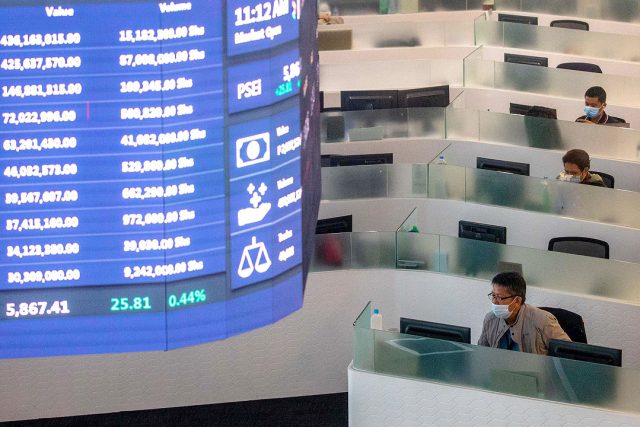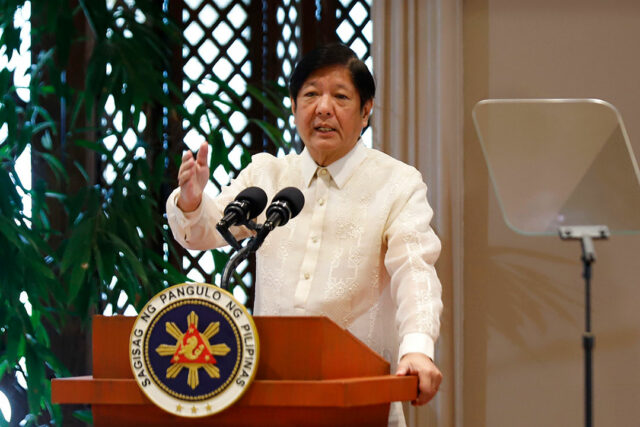THE National Economic and Development Authority (NEDA) expressed its support for removing nontariff barriers in food imports, saying domestic production is inadequate in curbing inflation, Secretary Arsenio M. Balisacan said Thursday.
In a statement, Mr. Balisacan, the government’s chief economic planner, said Administrative Order (AO) No. 20 was issued “as a supply-side response to help curb inflation by addressing its fundamental causes: shortages of food commodities due to inadequate and untimely imports.”
Last week, President Ferdinand R. Marcos, Jr. signed AO No. 20, tasking the Agriculture, Trade, and Finance departments to streamline administrative procedures in importing agricultural products.
Mr. Balisacan said that the order serves to stabilize prices and manage inflation amid weak local supply.
“We reassure the public that AO 20 is a strategic and necessary measure to ensure our people’s food security, particularly in terms of availability and affordability of food, and improve the overall welfare of Filipinos,” he said.
Mr. Balisacan said the AO is “a tool that considers the welfare of our farmers and fisherfolk and the vibrancy and potential of our agricultural sector as a growth driver of the economy.”
However, Mr. Balisacan said “neither the NEDA nor the government is biased toward imports.”
“Rather, the government bears the responsibility of utilizing various instruments in its arsenal of policy tools to stabilize prices while performing a delicate balancing act,” he said.
The order also allows imports of certain agricultural commodities beyond the authorized minimum access volume.
It also tasks agencies with simplifying procedures and requirements when issuing Sanitary Phytosanitary Import Clearances (SPSICs), and improving logistics, transport, distribution, and storage of agricultural imports.
The continued uptick in prices and inflation indicates that “domestic production is insufficient to meet the demand for key food commodities,” NEDA added.
“With the economy reopening, pent-up demand has spurred growth and contributed to faster inflation. At the same time, global supply chains and domestic production for key energy and food commodities and inputs were disrupted by several factors,” it said.
These include the Russia-Ukraine war, the continued spread of African Swine Fever (ASF) and Avian Influenza, and climate change-related disasters.
Inflation accelerated from 3% in January 2022, peaking at 8.7% in January 2023. Food inflation rose from 1.6% in January 2022 to 11.2% a year later.
Rice has been a major driver of inflation since August 2023. Last month, the commodity accounted for 2.2 percentage points of headline inflation.
The landed cost of imported rice is also 27-29% higher compared to a yer earlier, it added.
NEDA said red onion prices surged to a record P465 per kilogram in January last year “amid the non- issuance of sanitary and phytosanitary import clearances (SPSIC)… since December 2021.”
Despite an expected 4.7% increase in domestic production this year, onion output is still 10% short of demand, NEDA said.
Sugarcane production fell 10.7% in 2022 with area planted to cane declining 4.5%, NEDA said.
For pork, “Local production has since fallen short of meeting domestic requirements amid the ASF outbreak,” NEDA said.
Despite domestic supply strains, the government will continue to develop domestic agriculture, NEDA said.
“However, even as the entire government works hard to implement and invest in measures that will raise the yield of our farmers and increase their incomes, we acknowledge that the impact of these interventions takes time to materialize,” NEDA said.
Samahang Industriya ng Agrikultura (SINAG) executive director Jayson H. Cainglet said reduced tariffs and increased imports have not diminished food prices.
“Reduced tariffs for rice, pork, chicken and corn have been implemented for four years yet market prices aren’t going down,” he said in a Viber message.
“AO 20 might even open the floodgates for more undervalued and misdeclared agricultural imports,” Mr. Cainglet said, citing the lack of a 100% border inspection regime.
Federation of Free Farmers National Manager Raul Q. Montemayor said increased imports do not guarantee a drop in prices.
“The problem of high prices mainly comes from inefficiencies in the domestic market (high transport costs, many layers, hoarding and price manipulation, profiteering, etcetera) and not from difficulties in importing food,” he said via Viber. — Beatriz Marie D. Cruz












